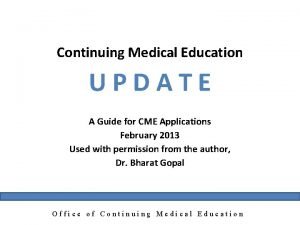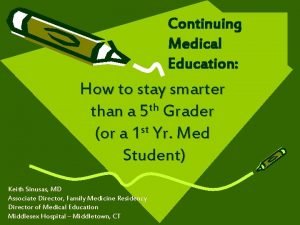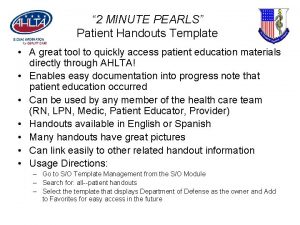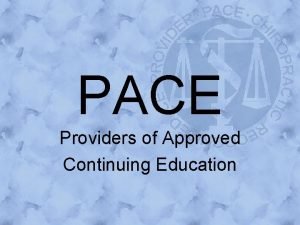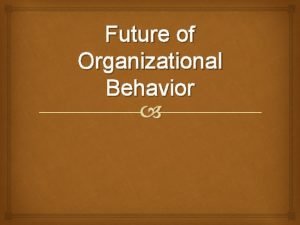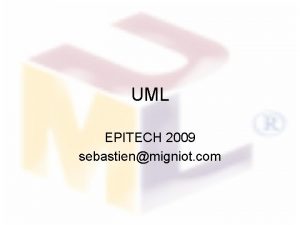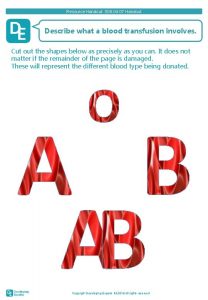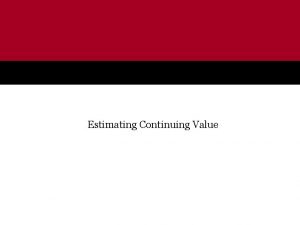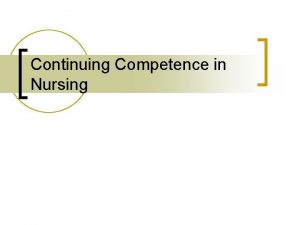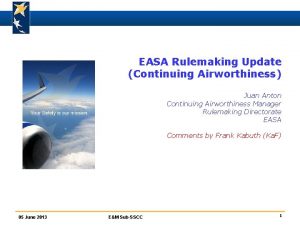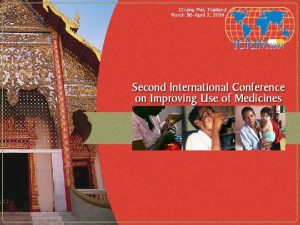Continuing Medical Education Course Handout FY 18 EpiTech


























- Slides: 26

Continuing Medical Education Course Handout FY 18 Epi-Tech Surveillance Training U. S. Army Public Health Center UNCLASSIFIED 1

Continuing Medical Education Course Handout U. S. Army Public Health Center UNCLASSIFIED 2

Continuing Medical Education Course Handout U. S. Army Public Health Center UNCLASSIFIED 3

ANNOUNCEMENT n To Register for the Monthly Disease Surveillance Trainings: Contact your Service Surveillance HUB to receive monthly updates and reminders 2. Log-on or Request log-on ID/password: https: //tiny. army. mil/r/z. B 8 A/CME 3. Register at: https: //tiny. army. mil/r/MEHs. S/Epi. Tech. FY 18 1. n Confirm attendance: Please enter your full name/email into the DCS chat box to the right or email your Service hub n You will receive a confirmation email within 48 hours with your attendance record; if you do not receive this email, please contact your Service hub n Integrity – Service – Excellence

Integrity - Service - Excellence Laboratory Testing: Education and Interpretation Victoria Holbrook, MPH Epidemiologist Epidemiology Consult Service (USAFSAM/PHR) 1 st Lt Cedric Walters Operations Chief, Immunodiagnostics Epidemiology Lab Service (USAFSAM/PHE) Distribution D: Do. D and Do. D Contractors Only Integrity – Service – Excellence

Learning Objectives n Describe lab test types commonly seen in the 2017 Reportable Medical Events (RME) Guidelines to improve reporting. n Understand the basic science behind common lab tests seen during disease surveillance to improve reporting accuracy. n Interpret lab test results found during surveillance activities to improve reporting accuracy. Integrity – Service – Excellence

What can be tested? n Sterile samples Blood/Serum n Pleural (joint) fluid n Cerebrospinal fluid (CSF) n n Non-Sterile samples n n n Stool Urine Tissue Sputum (saliva) Nasopharyngeal (nose/mouth/throat) Integrity – Service – Excellence

Most Common Test Types Antigen n Antibody n PCR n Culture n Vocabulary note: Assay = Test Integrity – Service – Excellence

Antigen and Antibody Tests Also collectively called immunoassays n For most infections there are both antibody and antigen tests n n n Have to pay attention to the lab results! Common test types: EIA (ELISA) n IFA/DFA n Western Blot (Ab only) n Antibody Titer (Ab only) n Integrity – Service – Excellence

Antigens and Antigen Tests n Antigens – Typically proteins on the surface of viral, bacterial, parasitic, or fungal cells; can also be chemicals produced by the infecting microorganism n Antigen (Ag) Tests Identify the presence of a known antigen in a sample n Typically used with acute infections n Results are positive or negative n Integrity – Service – Excellence

Antibodies and Antibody Tests n Antibodies – Proteins produced by the immune system; are specific to a particular antigen n Antibody (Ab) Tests Identify the presence of a known antibody in a sample n Used with acute or chronic infections n Results are positive or negative n n Can be quantitative Also called immunoglobulin (Ig) n Two most important antibody classes: Ig. M and Ig. G n Integrity – Service – Excellence

Antibodies n Ig. M Antibody n Ig. G Antibody Produced first in response to infection n Marker of current infection n Detectable for up to 6 months after infection Produced later in response to infection n Marker of long-term immunity n From vaccination or disease n Integrity – Service n – Excellence

Antigen/Antibody Tests n Antibody/antigens are a matched pair n n An antibody is like a lock with a specific antigen key Antibody tests use an antigen to see if antibodies are present n Antigen tests use an antibody to see if antigens are present Antibody Antigens The top assay would be positive; the bottom assay would be negative Integrity – Service – Excellence

Results and Interpretation n For EIA, IFA, or DFA results will indicate if the test was: Antigen or antibody n Antibody Ig. M or Ig. G n Antigen Antibody Ig. M Integrity – Service – Excellence Ig. G

Sinlge Antibody Titer n Titer is a serial dilution of a patient sample (serum) diluted with saline or water n n Goal: Find how much antibody is in a sample A higher titer means more antibodies in the sample Integrity – Service – Excellence

Results and Interpretation Serial Dilution: 1: 8 1: 16 1: 32 1: 64 1: 128 Integrity – Starting point 1 - fold serial dilution 2 - fold serial dilution 3 - fold serial dilution 4 - fold serial dilution Service – Excellence

Results and Interpretation n AHLTA antibody titer result: Integrity – Service – Excellence

Paired Antibody Titer n Sometimes antibody titers are tested in pairs called “acute and convalescent sera” or “paired sera”: Acute titer, taken first n Convalescent titer, taken 2 -4 weeks later n Convalescent sample Acute sample Integrity – Service – Excellence

Results and Interpretation n For a positive “ 4 -fold rise in antibody titer” the convalescent serum must be positive at 4 dilutions more than the acute serum result n Example scenario: Is this a 4 -fold increase? Acute: Convalescent: Integrity – Service – Excellence

Results and Interpretation 1 We’re looking for a 4 -fold increase when compared to the FIRST titer n 2 5 4 3 + + + - 1/16 1/32 1/64 1/128 1/256 1/512 1/1024 Yes. The convalescent titer is actually 5 -fold higher than the acute titer. Integrity – Service – Excellence

PCR n PCR – Polymerase chain reaction n n Detects the presence or absence of organism-specific DNA (or RNA) “Bio. Fire GI Film Array” sound familiar? Integrity – Service – Excellence

Results and Interpretation n Results are positive or negative: n AHLTA results may say RT-PCR n NAAT n DNA n RNA n Integrity – Service – Excellence

Results and Interpretation n PCR proves there is genetic material, but it does not necessarily prove that the organism is alive and actively causing infection n A positive PCR for Shiga-toxin producing (STEC) E. coli is not reportable under the RME Guidelines for this reason Integrity – Service – Excellence

Culture n n Culture refers to “culturing” or growing an organism on, typically, a petri dish n Takes several days to grow most organisms n Physicians could run multiple tests at the same time to get quicker results Also sometimes called “isolation” Integrity – Service – Excellence

Results and Interpretation n Results are positive or negative; the organism grows or doesn’t n Culture is typically the “gold standard” n n Proof the organism is present AND alive If other tests are inconclusive, culture results usually trump all other tests Integrity – Service – Excellence

Contact Information n Army: APHC – Disease Epidemiology Division Aberdeen Proving Ground – MD COMM: (410) 436 -7605 DSN: 584 -7605 usarmy. apg. medcom-aphc. mbx. disease-epidemiologyprogram 13@mail. mil n Navy: NMCPHC Preventive Medicine Programs and Policy Support Department COMM: (757) 953 -0700; DSN: (312) 377 -0700 Email: usn. hampton-roads. navmcpubhlthcenpors. list. nmcphc-threatassess@mail. mil Contact your cognizant NEPMU 2: COMM: (757) 950 -6600; DSN: (312) 377 -6600 Email: usn. hampton-roads. navhospporsva. list. nepmu 2 norfolk- threatassess@mail. mil NEPMU 5: COMM: (619) 556 -7070; DSN (312) 526 -7070 Email: usn. san-diego. navenpvntmedufive. list. nepmu 5 -health-surveillance@mail. mil NEPMU 6: COMM: (808) 471 -0237; DSN: (315) 471 -0237 Email: usn. jbphh. navenpvntmedusixhi. list. nepmu 6@mail. mil NEPMU 7: COMM (int): 011 -34 -956 -82 -2230 (local): 727 -2230; DSN: 94 -314 -727 -2230 Email: NEPMU 7@eu. navy. mil n Air Force: Contact your MAJCOM PH or USAFSAM/PHR USAFSAM / PHR / Epidemiology Consult Service Wright-Patterson AFB, Ohio COMM: (937) 938 -3207 DSN: 798 -3207 usafsam. phrepiservic@us. af. mil Integrity – Service – Excellence
 Uic cme
Uic cme Aafp metric
Aafp metric Continuing medical education
Continuing medical education Patient education pamphlet template
Patient education pamphlet template San diego continuing education north city campus
San diego continuing education north city campus Texas engineering practice act
Texas engineering practice act Imslec continuing education
Imslec continuing education Stanford university continuing education
Stanford university continuing education Uconn pmba curriculum
Uconn pmba curriculum Ct p2 continuing education
Ct p2 continuing education Tesol course uq
Tesol course uq New jersey institute for continuing legal education
New jersey institute for continuing legal education Georgia pe pdh
Georgia pe pdh Life long education artinya
Life long education artinya Dropping out of oxford
Dropping out of oxford Dlgf(dlgf)continuing education/webinars
Dlgf(dlgf)continuing education/webinars Oxford dept of continuing education
Oxford dept of continuing education Fclb pace
Fclb pace Bladen community college continuing education
Bladen community college continuing education What habits and characteristics do test-wise students have?
What habits and characteristics do test-wise students have? Importance of continuing education
Importance of continuing education Iec irving
Iec irving Avinash dixit education
Avinash dixit education English bond t junction elevation
English bond t junction elevation Course title and course number
Course title and course number Course interne course externe
Course interne course externe What does rolling with resistance mean
What does rolling with resistance mean
